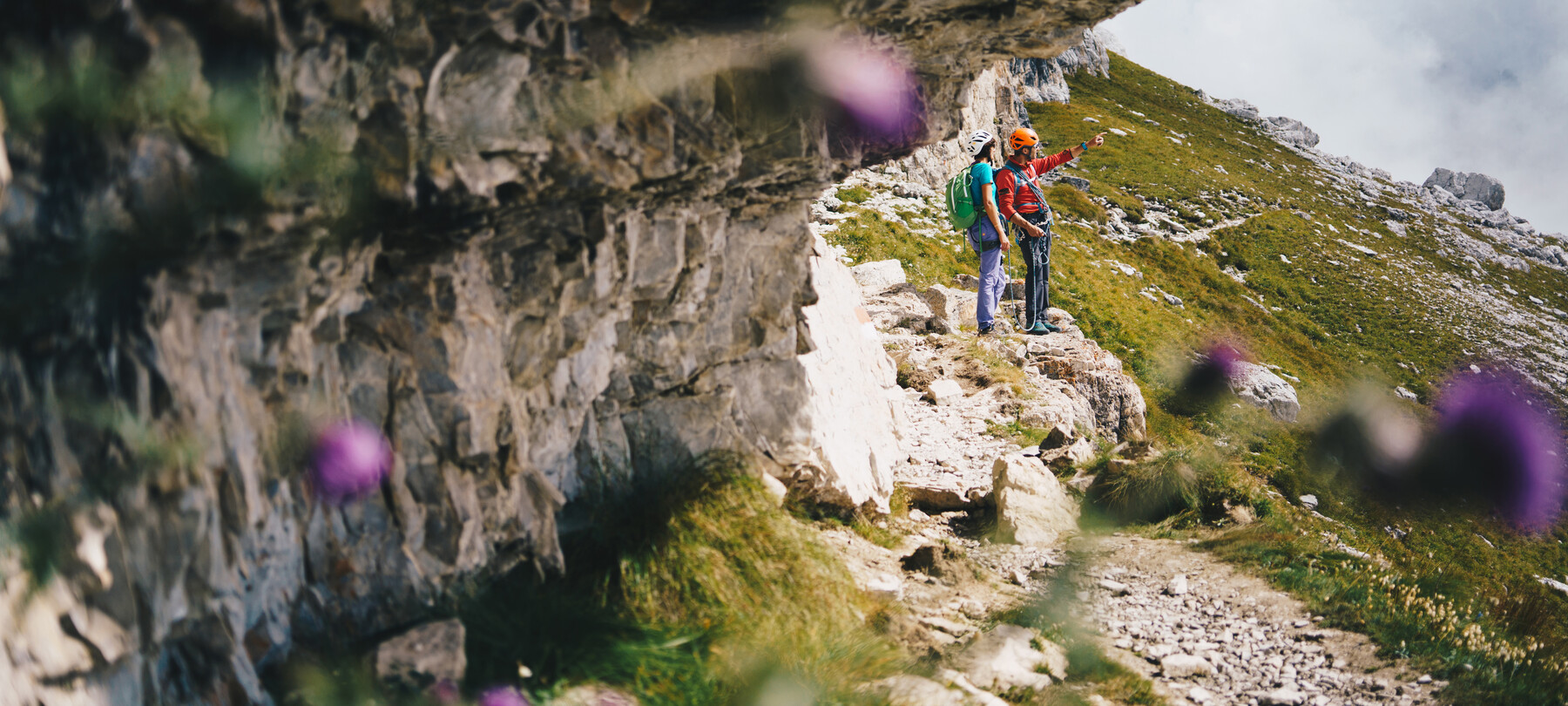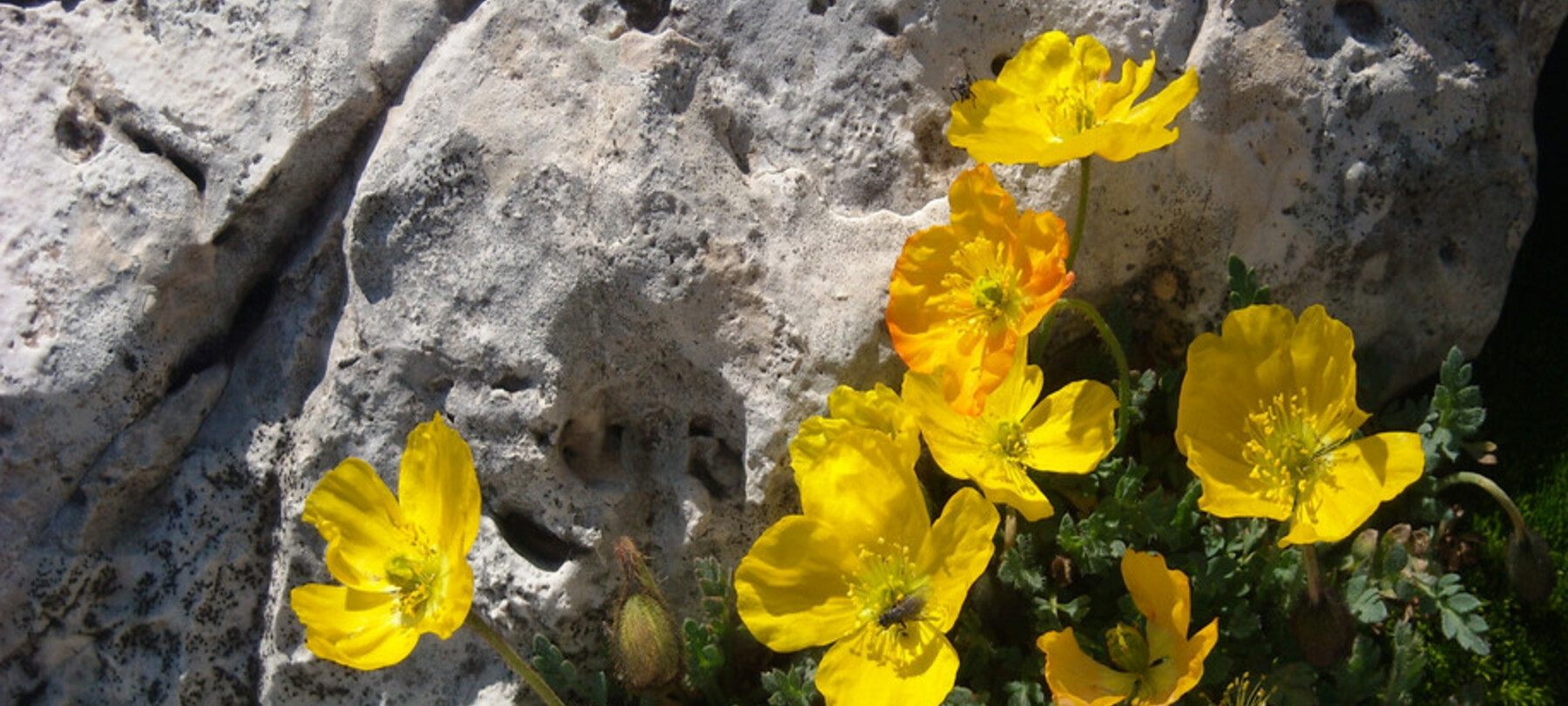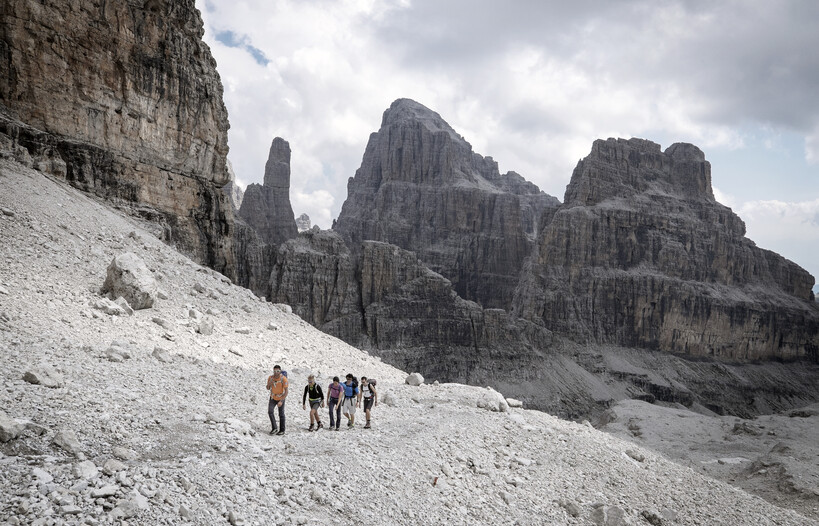The hidden nature of Brenta
The Brenta group is home to an unexpected wealth of flora among its scree and crevices
Every stage of the Via delle Normali allows you to explore the most hidden and impenetrable corners of the Brenta Group. The second stage of this combined climbing and trekking route, which connects 10 peaks of the Brenta Dolomites, will lead you from the Agostini lodge to Cima Tosa and Crozzon di Brenta before descending to the Pedrotti lodge.
The descent, along the normal way which leads into the Brentari trail, is an excellent opportunity to observe the typical flora of the Dolomites.
Before setting out on an excursion at altitude, plan your trip with care. If you are inexperienced or you intend to tackle a route graded as technically difficult, then consult an alpine or mountain guide. You should also contact the refuge warden in the area you’ll be visiting for the latest weather information and to discuss whether your route is advisable. Take prudent precautions, wear suitable clothing for your route, and remember to act responsibly in the mountains at all times.

The flora of the Dolomites
High up, among the scree and in the crevices of the rocks, live many glacial relicts: endemic plant species which live at altitudes of over 2,000 m, having survived the Quaternary glaciation.
You may find yourself joined on your ascent by extremely rare botanical species, whose roots are able to cling to the little soil available between the stones and crevices. The amazing thing about these species is their ability to survive in an environment which, from afar, seems completely barren and lifeless.
The tufted horned rampion is one of these plants, a holdover from long-ago. It specialises in growing in the shade of dolomite or limestone walls at altitudes of up to 2,000 m, with its tapered petals and purple colour giving it a most unusual appearance. You won’t notice it until it’s right in front of you, because rampion loves to live in the very depths of those damp crevices that we usually avoid when climbing.
As you descend towards the Tosa-Pedrotti lodge, you must cross a slope of scree and stones. This apparently barren and continuously shifting territory is the ideal terrain for Alpine poppy, with its eye-catching yellow bloom. The Alpine toadflax, a small, purple creeping plant which makes its home among the stones, is less easy to spot.

Pioneer species
All the species you will come across among the rocks and stones are defined as “pioneers”, because they are the first to succeed in colonising harsh and unstable environments. They hold onto the scree and stabilise it, forming the first patches of stable land where other plants can then begin to grow. Little by little, assuming no major floods or landslides interrupt the process, the areas of scree become rich in vegetation, even sprouting trees such as the mountain pine.
One plant which specialises in this stabilisation of land is the potentilla persicina, which is also easy to spy thanks to its purplish-red colour. This plant forms soft, low-growing cushions which have an oval shape and are dense with leaves. These cushions are able to maintain the ideal micro-climate to protect the plant from sudden changes in temperature, in a place which is often scoured by the wind.
The Brenta group has so many fascinating features to discover, and every stage of the Via delle Normali leads you through different climate zones; so, whenever you’re taking a break, remember to keep your eyes open for what you might find between the stones!



